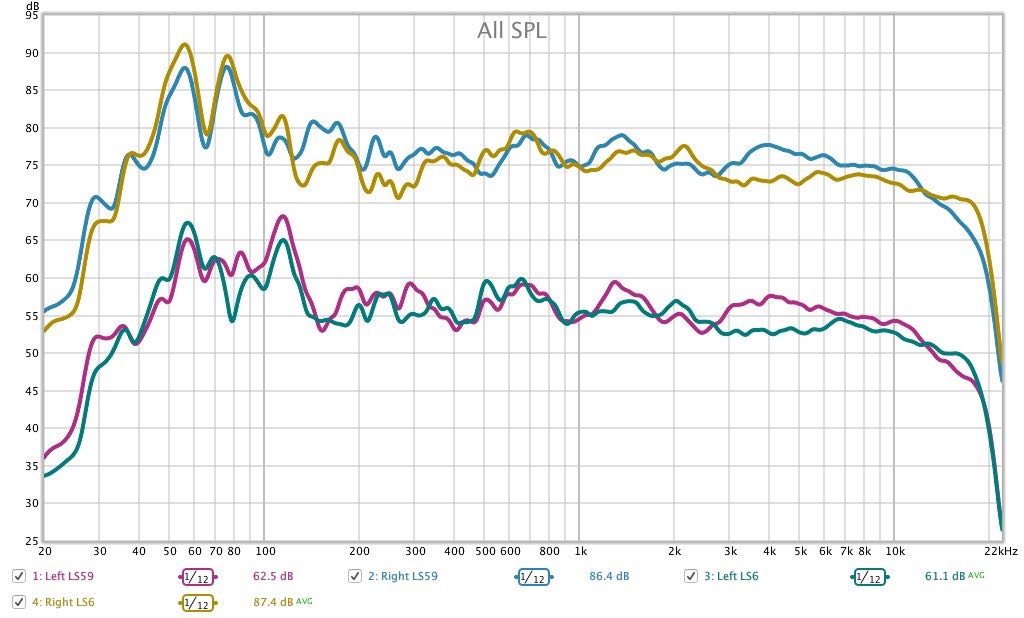Strictly Stereo
Trade: Strictly Stereo
Some comparative in room measurements of the LS6 and LS5/9. I have added 20dB offset between the left and right channels for legibility.




Last edited:


confidence 20 use a 6.5 inch woofer vs a 8 inch woofer of the graham.
just for this, i cannot take seriously a 6.5 inch bass speaker. very limited spl wise, distortion will be easily too high, limited extension. all this even more expensive then the ls59
Listen, don't measure. For example, you could've said Graham use an 8" mid range which is far too big compared to a more sensible 6.5" mid of the Dynaudio. See? Doesn't make sense to make generalisations. It makes much more sense to listen to them.

Some comparative in room measurements of the LS6 and LS5/9. I have added 20dB offset between the left and right channels for legibility.

thing is, a 8 inch midbass will always be much better in the bass then a 6,5 inch. imo, 6,5 inch based speakers are toys and cannot ever be played loud: no matter how good the mid will be, bass will be compromised (distortion, imd, extension limited). id also say i like big mid sound, 6.5 inch mid will always sound “small”Listen, don't measure. For example, you could've said Graham use an 8" mid range which is far too big compared to a more sensible 6.5" mid of the Dynaudio. See? Doesn't make sense to make generalisations. It makes much more sense to listen to them.
Lee, out of interest do you have any measurements of them without as much room interaction? 1m gated etc, or is everything you took at listening position?
This is what a good speaker sounds like.They are not bright, but very clear.
They aren't brainwashed. They just recognise excellent loudspeakers...
By the way, I have added the punctuation you neglected to put in.
If you're going to post, do it correctly.
while yes the 8 inch beams and is a compromise desing to make it play up to 2.5khz/3khz, its still much less compromised then asking a 6.5 inch midbass to do bass.
No.
Do you need to drive this car to know it will fail?

So tell me what size driver is in the ProAcs D30R's and new K3's?
(i think i could do that to any car coming down a ramp onto a positive camber like that)
Totally, and the new Confidence 20s have a decent size cabinet for a 6.5" driver.

Indeed, point being its all about the implementation and the sum of parts and design as a whole.
Example, the VOLT BM228.8 in my 21L cabinet produce better (and lower) bass notes than the ATC50ASLs did. Both ported and one 2/5th the size.
Are Volt making any finished speakers or available in any known brands ?
As well as making excellent speakers. As you say amazing.Its amazing hes is able to brainwash so many disciples
That is a superb resource, hardly anyone measures their speakers with that degree of professionalism.
Keith
